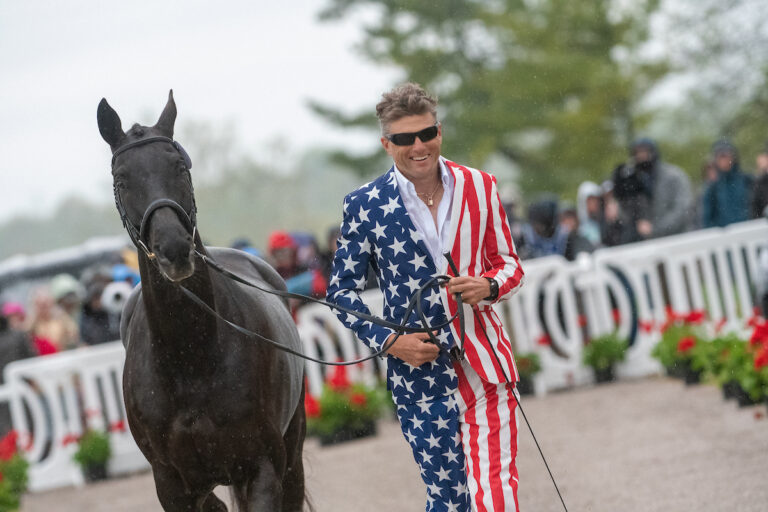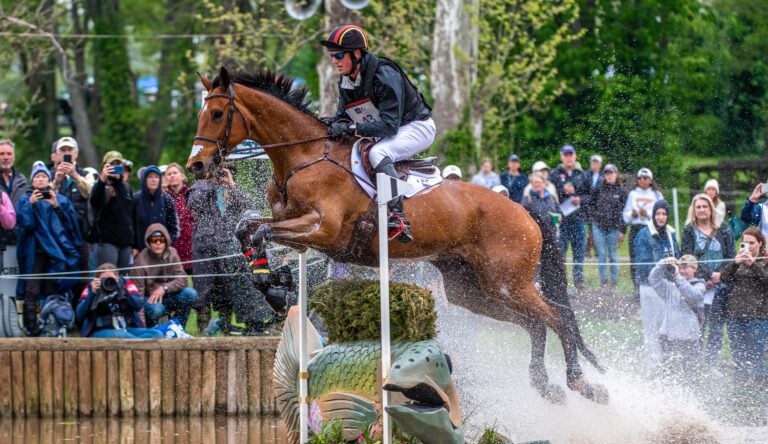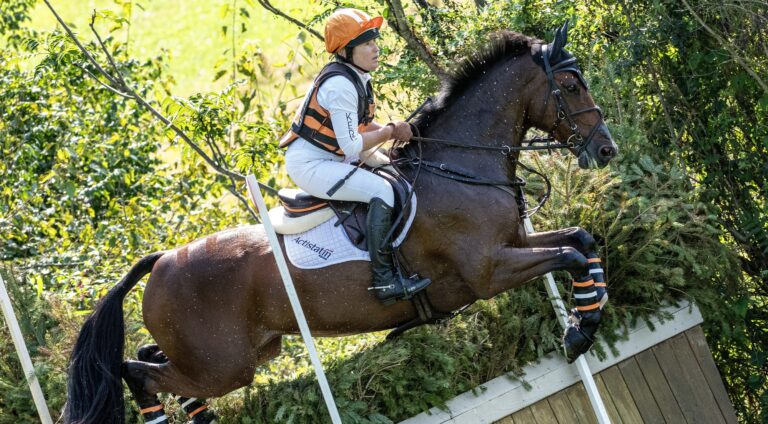.jpg)
The FEI World Equestrian Games™ offer the chance of a lifetime, not only for athletes making their debut at the compilation of eight world championships but also for U.S. spectators who have never been to a competition of that magnitude.
The Sept. 11–23 WEG at the Tryon International Equestrian Center in Mill Spring, North Carolina, is just the second fixture to be held in the U.S. since the Games began in 1990. The first was in 2010 at the Kentucky Horse Park.
If you’re putting off a trip to WEG, thinking the U.S. will host another, a better question is whether there will be another WEG anywhere because the event has become so expensive and complicated to run.
“The size that it’s grown to is very challenging for any organizer to put on,” says Michael Stone, the Tryon WEG’s president and sports director.
So there’s no time like the present to enjoy a smorgasbord of diverse choices at Tryon with a menu that includes show jumping, eventing, dressage, para-dressage, reining, vaulting, four-in-hand driving and endurance. The compact nature of the venue means it’s possible for spectators to easily walk from one arena to another to catch several different competitions, which to a certain extent is the point of WEG.
“It’s really nice that all the disciplines are together. It cross-mingles the equestrian population around what we all love, the horse, and exposes people to different sports,” said John Madden, a former first vice president of the FEI who also served as chairman of that organization’s show-jumping committee.
The WEG will be the biggest sporting event in the U.S. this year, including approximately 1,000 athletes. “We’ll expect about 500,000 spectators. Even on the world stage of sports, that’s big. Having said that, the practicality of it is very difficult,” observed John, who is married to Beezie Madden, the show-jumping double-bronze medalist at the 2014 WEG in Normandy, France.
“But at the end of the day at Tryon, we’ll have great sport, a great facility and we’ll have challenges. Yes—traffic, hotels, all of that will be difficult.”
Then John chuckled, musing, “Somebody from some foreign country will end up stopping at a diner on the way because they had to stay too far away and meet some wonderful waitress who gives them the best cup of coffee they ever had. That becomes part of the story.”
Big advantages for Tryon as an ongoing operation are its seven permanent restaurants and other facilities as well as its state-of-the-art stabling with a separate quarantine facility right on the grounds and plenty of space for training the 1,500 horses that will take part in the Games.
But because Tryon is out in the countryside, human housing isn’t as convenient, with hotels generally from a half-hour to an hour away. “That in itself provides significant challenges around logistics for a team and also for people traveling—media, sponsors, spectators,” pointed out Will Connell, the U.S. Equestrian Federation’s director of sport. But he’s a problem-solver who never loses focus on his role with the U.S effort. “Always the aim is to try and create an environment where the riders and staff can perform to their very best,” he explained.
As Will observed, even those who have competed previously at TIEC or attended competitions there will find they have a learning curve for WEG. “This is not the Tryon you know. There’s going to be a completely different overlay. There’s going to be security, there’s going to be different parking, there’s going to be mag and bag [screening with a magnet scanner and bag check], there will be lines to get in.”
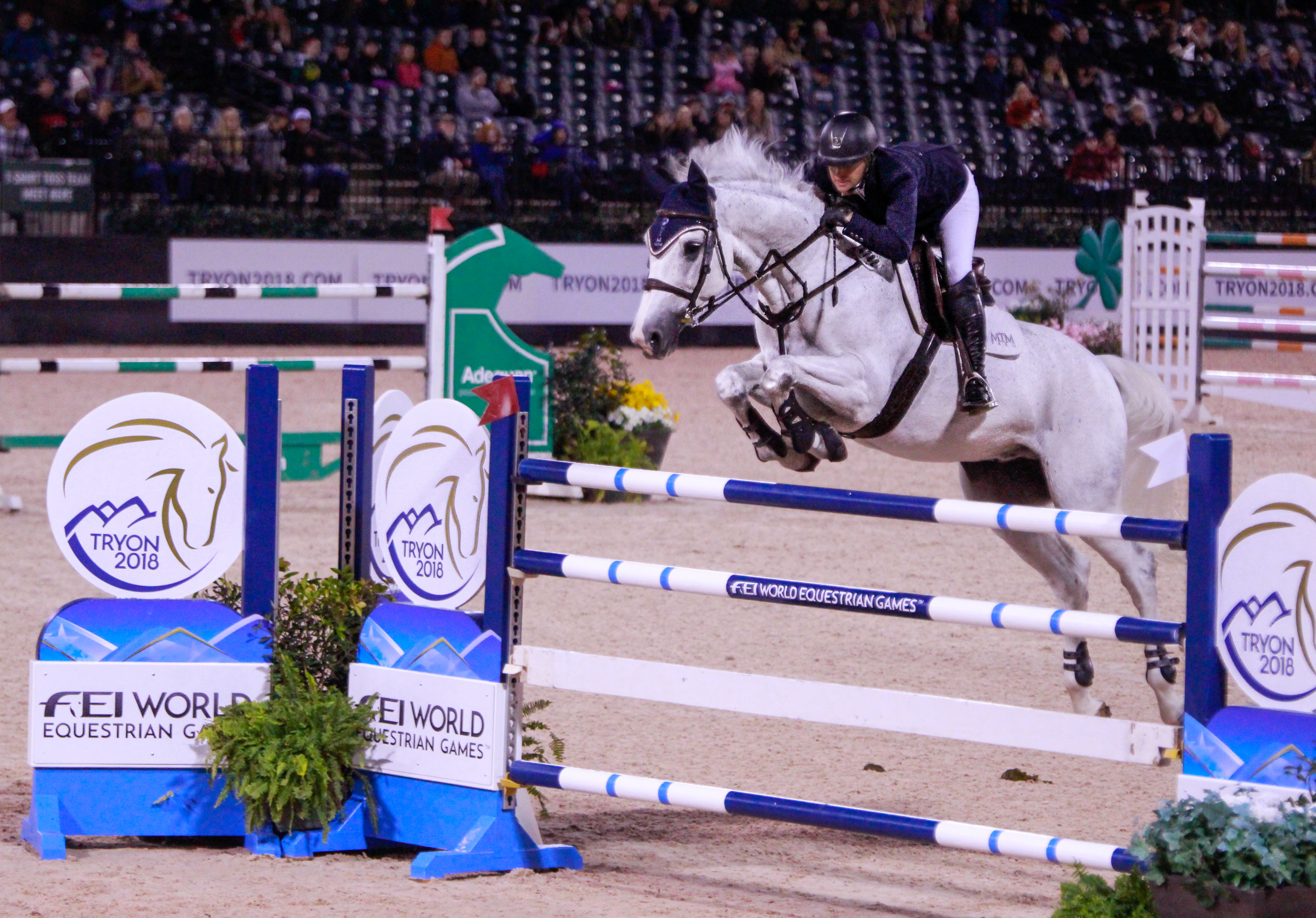
Show Jumping: A Global Market
The excitement of seeing a multitude of flags has been heightened by the fact that some countries which once were also-rans and in it just for the experience, are now contenders. That is particularly true in show jumping but less so in dressage and eventing, where the prospective medal scale weighs heavily toward the usual suspects.
“The world has gotten smaller in a lot of ways,” said McLain Ward, a member of the bronze-medal show-jumping team in Normandy, who is also a two-time Olympic gold medalist and World Cup champion.
“The perennial favorites, the Germans, the Dutch, the Americans, the British, are strong,” he noted, naming only a few. France and Sweden could also be medal contenders. Show-jumping coach Robert Ridland advised that Canada shouldn’t be overlooked and that Belgium and Ireland also are showing strength in the run-up.
At the same time, McLain emphasized, “There are a lot of countries that were not factors even 10 years ago that are factors now and I think that’s made the sport more exciting. It’s opened up a global market.”
Latin America presents a show-jumping strong spot in Brazil, and in North America, Mexico has shown promise. Some of the Middle Eastern countries, including Saudi Arabia and Qatar, have made their presence felt. Israel could well become more prominent for the first time. Its star is Daniel Bluman, who rode for Colombia in the Olympics and switched citizenship.
“The sport continues to develop a lot and you have more and more riders over the world doing well,” said John. He noted that the Olympic format for 2020 has expanded dramatically in terms of the number of teams participating: 20, rather than the 12 who show-jumped in Rio two years ago. “I’m really hoping the sport develops worldwide so there are 20 deserving nations to go to Tokyo,” he commented.
There are always more teams in the WEG than in the Olympics. While 18 teams jumped in Normandy, there could be between 30 and 35 teams competing in Tryon. Where does the U.S. fit in?
“I always believe that the U.S. at its best will win,” said McLain. “If we’re a little short of our best, hopefully we’ll get a medal. It’s always wonderful to have the home-crowd advantage. It’s always wonderful to have the enthusiasm and support, but it also comes with its share of burdens and stresses which you don’t deal with when you’re abroad.”
U.S. Eventing Performance Director Erik Duvander, a native of Sweden, remembers his experience riding in front of a home crowd at the first WEG 28 years ago in Stockholm as “an opportunity you wouldn’t want to miss. It drives you. You want to be at your best when you’re riding in front of your country.”
This WEG is the first time that the show-jumping world championships are being held without the Final Four for the individual medals. That involved having the top four riders throughout the previous segments of the competition all start out on zero penalties and switch horses so each rode four more rounds. In recent years, the concept has come under criticism for a number of reasons, including the fact that the horses have become wildly expensive. Even a great rider who isn’t used to a horse could make a costly mistake with a mount that the athlete is in effect catch-riding.
“In the old days, when the horses were very, very different and the world was much bigger, I think it was really valid,” said John. “But now the test of the sport is so much more to do with the relationship between the horse and the rider than ever. As our sport evolves, it goes toward treating that relationship as precious. It’s a nice step forward and it will be nice to see how that works out as well.”
Under the new format for individual honors, the top 25 riders following the speed and team competitions will qualify for the two-round individual final. After all 25 have competed, the top 12 with the least penalties from the previous days’ competitions and Round A of the finals will return to jump again over a different course. The medals will go to the three riders with the least penalties throughout the entire competition.
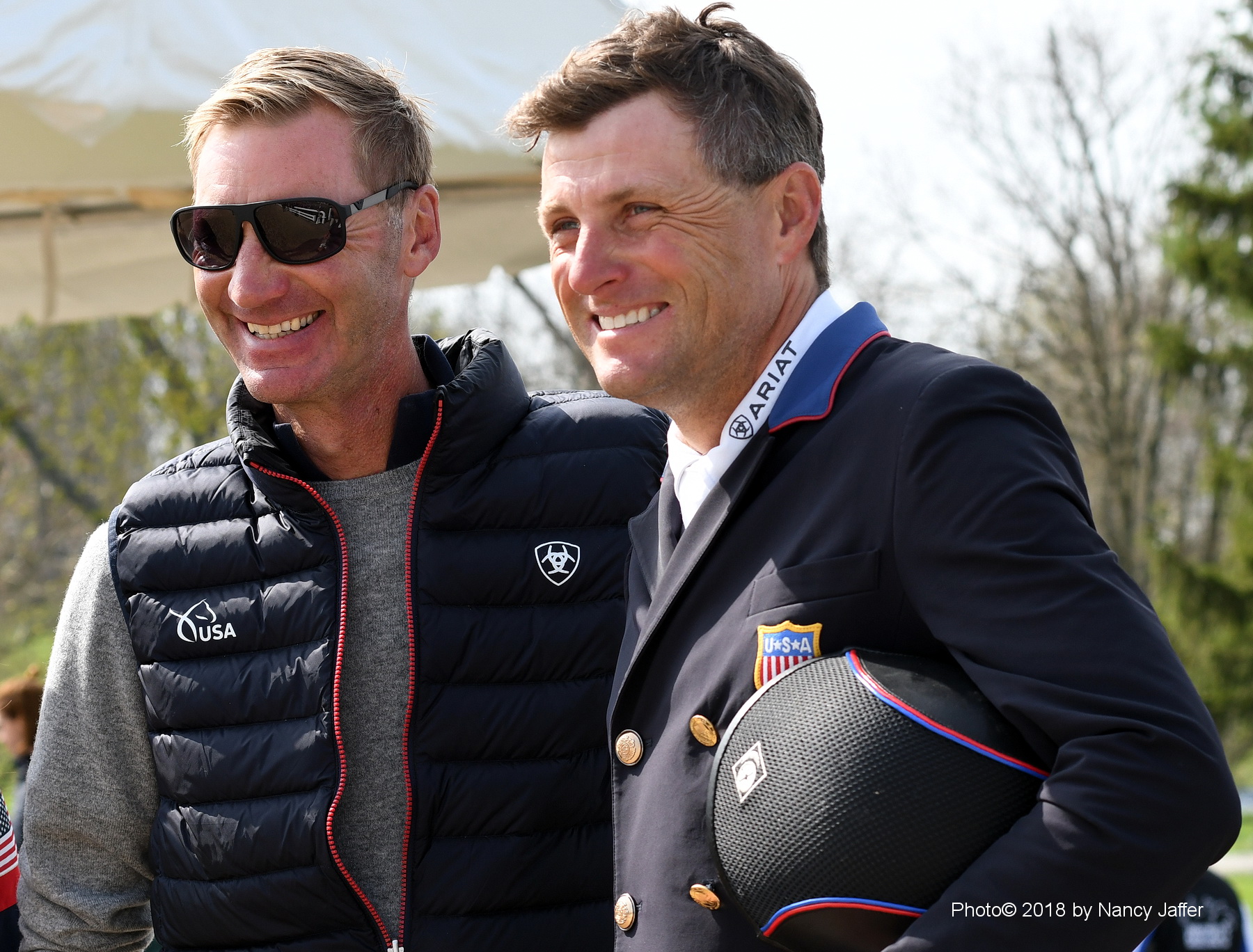
Eventing and Dressage
For eventing and dressage, there are fewer countries to be considered as likely WEG medal factors than in show jumping. In both disciplines, that includes Germany and Britain while the Dutch, the Danes and possibly Sweden or Spain could figure in dressage. In eventing, the Australians, New Zealanders and French are also ones to watch.
“I wouldn’t say we’re a gold-medal prospect, but our goal is to get qualification [for the 2020 Olympics] and try to medal,” said Erik, who came on board as eventing performance director only last autumn and is a “wicked asset” according to perennial U.S. team member Boyd Martin.
The all-important qualification, achieved by finishing in the top six at WEG, is also the goal for show jumping and dressage. The idea is that after WEG those teams can concentrate on preparing to do well in Tokyo instead of figuring out how to get there. Making the top six—a very achievable goal for the U.S. in all three disciplines— would eliminate the worry of having to qualify for Tokyo at the 2019 Pan American Games in Lima, Peru. Both eventing and dressage needed to qualify for Rio at the 2015 Pan Ams in Canada, having failed to make the cut at the 2014 WEG.
According to Boyd, “This has been the year where, as a country, we’ve looked the strongest. The last couple of teams, I don’t think the selectors had to do anything except pick whoever’s left. And now, this year, there’s a number of horses and riders who are in great form, have had good results.”
Sadly, he suffered a blow when Shamwari—the leader after cross country at the Luhmülen, Germany, event in June—suffered what appears to be a career-ending hind-leg injury. But Boyd, the top U.S. finisher in both the 2010 and 2014 WEG, had another candidate in the up-and-coming Tsetserleg, an 11-year-old Trakehner gelding. The pair has been named to the U.S. team headed to WEG along with Phillip Dutton and Z, a 10-year-old Zangersheide gelding; Lauren Kieffer and Vermiculus, an 11-year-old Anglo-Arabian gelding; Marilyn Little and RF Scandalous, a 13-year-old Oldenburg mare; and Lynn Symansky and Donner, a 15-year-old Thoroughbred gelding. At press time, the show-jumping and dressage teams had not been named.

In dressage, the U.S. has unprecedented strength and depth, according to Technical Advisor Robert Dover. It’s needed, with lots of challenges to be faced.
It had seemed, for instance, that Great Britain would be weaker without Valegro, who retired after winning individual gold for Charlotte Dujardin in Rio. But Charlotte now has a special new horse, Mount St. John Freestyle, a 9-year-old whose ability has prompted her nickname, Mrs. Valegro. The mare’s inexperience may not be in her favor, but if all goes well for Charlotte, perhaps she could once again be an individual medal contender along with Isabell Werth of Germany on Weihegold OLD and Laura Graves of the U.S. with Verdades, in addition to Germany’s Sönke Rothenberger and Cosmo.
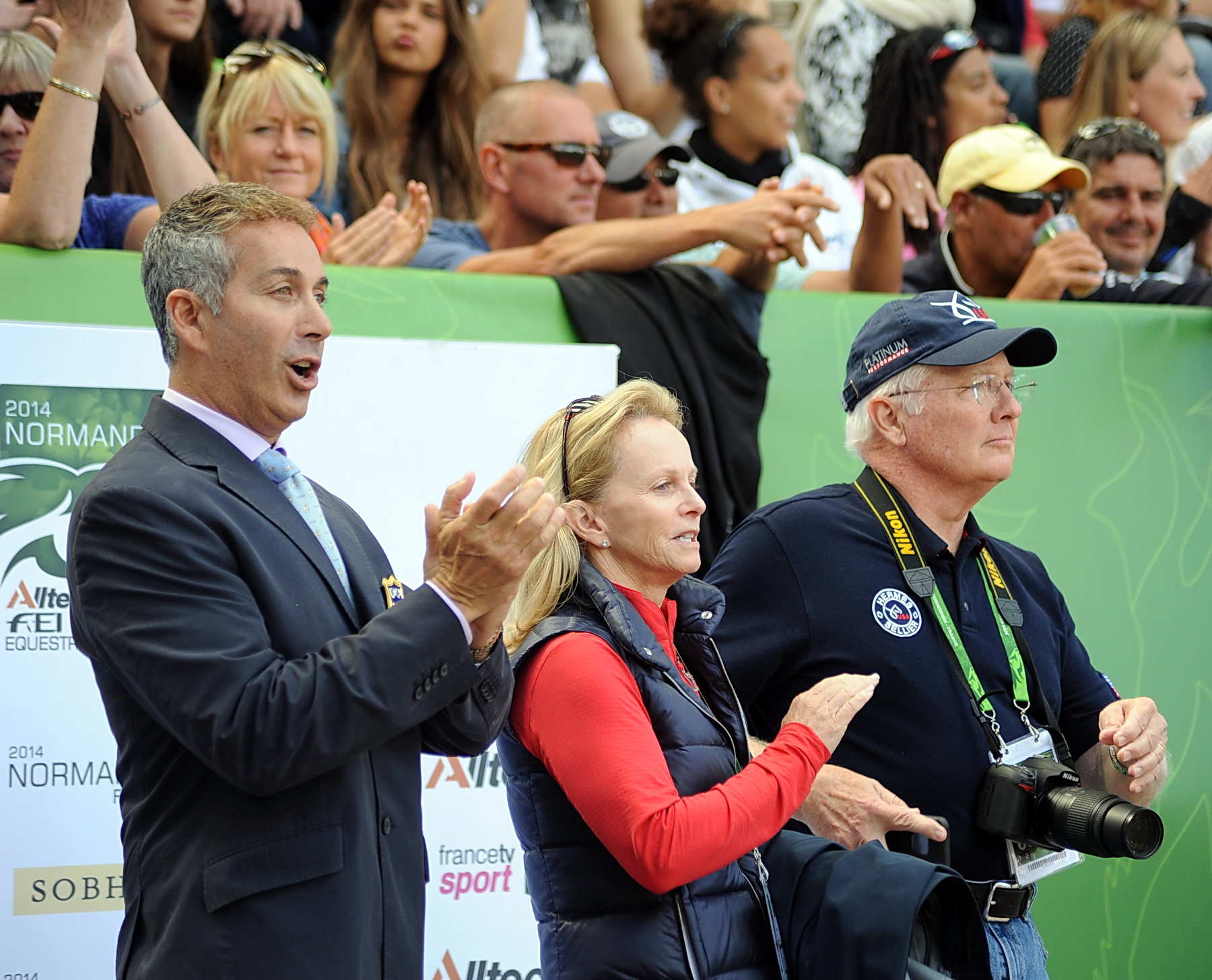
It’s hard to think of any country beating Germany for gold. Robert categorizes it as “a super power.” If Isabell could be cloned, she has enough horses to compose the entire German team, but the world-ranked No. 1 rides with some formidable teammates.
Robert has a great deal of confidence in the talented riders who will make up the U.S. team. For her part, U.S. Dressage Development Coach Debbie McDonald—who was named to succeed Robert later this year—also has a good feeling about the home team’s prospects at WEG.
“As far as the riders and talent we have in the U.S. right now,” she said, “I think it’s a very strong possibility that we’re going to be on that podium.
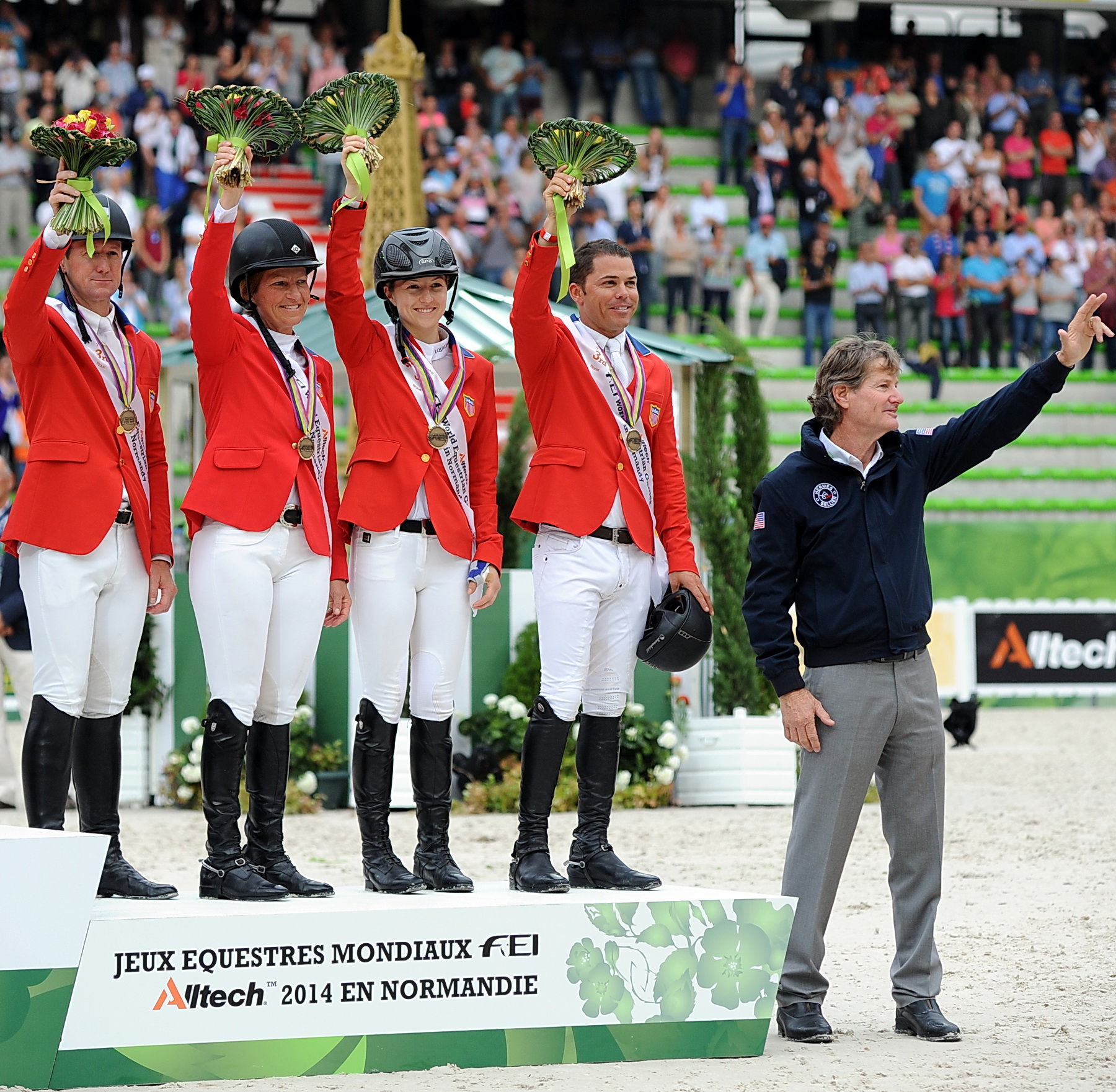
The Future Of WEG
There are a lot of unknowns about the future of the World Equestrian Games. No entity has made a bid to hold the 2022 WEG—Samorin in Slovakia decided not to go for it, though the Tryon International Equestrian Center’s interest shouldn’t be ruled out once 2018 is history. The second time likely would be easier with the extra infrastructure already in place. But would the European federations want to return to the U.S. for a WEG twice in a row?
“I think following this, the FEI needs to review the whole Games concept,” said Michael Stone, the Tryon WEG’s president and sports director, who says bringing in needed infrastructure for many sites is a challenge.
Ask the folks who were involved with the original winning bidder for 2018, Bromont in Quebec. When the enterprise was unable to get sufficient financial backing, the plug got pulled in 2016. Luckily, Tryon stepped in even though Equestrian Sport Productions, LLC CEO Mark Bellissimo originally thought it was more likely that 2022 or 2026 would be the WEG target for TIEC, which opened only four years ago. Hosting 2018 accelerated development at TIEC, where about 4 million cubic yards of earth have been moved in the process.
The first WEG, held in 1990, was supposed to be a one-time concept featuring six disciplines (para and reining were not included). But it went so well in Stockholm, Sweden, that it became a quadrennial event, presented in the middle of the four-year Olympic cycle.
There are those who long for the return of individual discipline championships in a variety of countries, the way it was before 1990 because WEG has had its problems. The 1994 and 1998 WEGs, for instance, had to move when the original hosts, Paris and Ireland, respectively, found they weren’t able to carry on.
The ’94 WEG went to The Hague in the Netherlands and suffered serious financial woes. Rome was able to pull off the 1998 WEG with style on short notice, though it didn’t include para, endurance or reining. The 2002 WEG in Jerez, Spain, had a Spanish flavor and reining was presented for the first time. It also ran at a deficit, as did the 2010 Kentucky WEG, where para-dressage made its first appearance.
Although Stockholm was special, it’s generally thought that the best WEG was Aachen in 2006 because the German show crew puts on a big multi-discipline competition every year and the Games weren’t that much of a stretch for this well-organized operation. The 2014 WEG in Normandy, on the other hand, with disciplines scattered around the main host city of Caen and beyond, endured traffic jams, poor planning in terms of catering and other hitches that cast a shadow on the experience for many in attendance.
“There’s always a huge financial hurdle when you put all the disciplines together,” said John Madden, a former first vice president of the FEI who also served as chairman of that organization’s show-jumping committee, but he noted, “At the end of the day, it comes down to what happens in the competition arena.”
Can’t make it to the Games?
We’ve got you covered! The Practical Horseman team will be on-site at the 2018 WEG. For lead-up stories and information on the Games and up-to-the-minute coverage while we’re there, check out our WEG page and follow us on social media—Facebook, Instagram, Twitter and Pinterest.
This article was originally published in the September 2018 issue of Practical Horseman.





